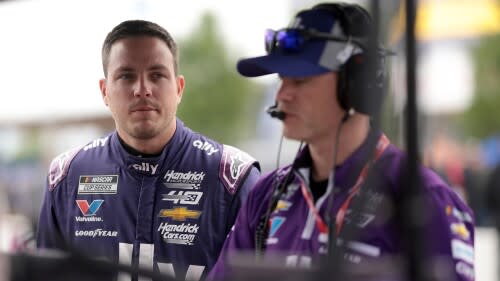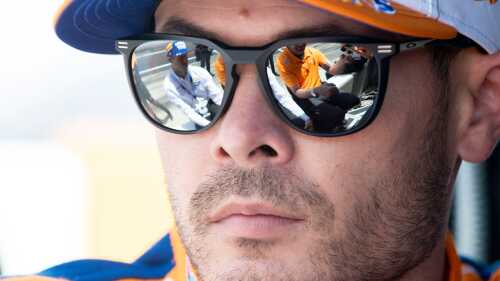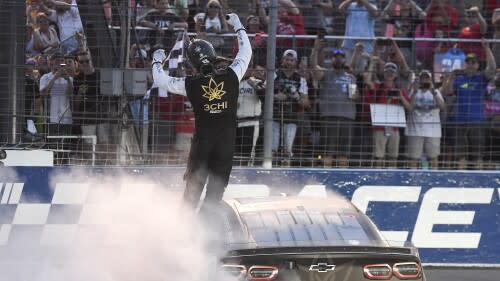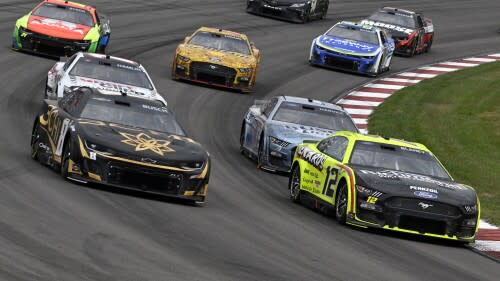Sports
Friday 5: Front Row Motorsports finds ways to make charter system work for it
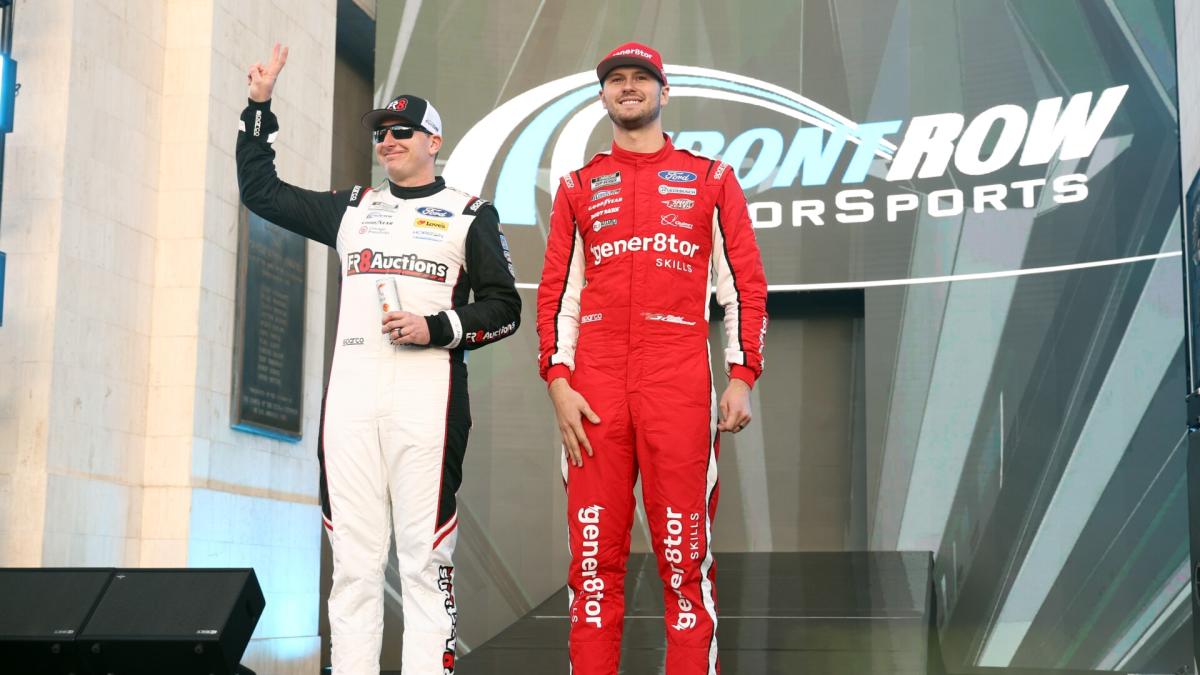
Jerry Freeze, general manager of Front Row Motorsports, is nearly speechless as he hears the stat.
“Wow!” he tells NBC Sports. “Wow. That is amazing.”
In 2016, NASCAR granted charters to 19 Cup organizations. After this season, only seven will remain — including Front Row Motorsports.
The other six organizations that still will be competing in 2025? Hendrick Motorsports, Joe Gibbs Racing, Team Penske, RFK Racing, Richard Childress Racing and JTG Daugherty Racing.
Eight of the nine Daytona 500 winners in the charter era have come from those teams. All but RFK Racing has won “The Great American Race” in that time. Michael McDowell delivered Front Row Motorsports a Daytona 500 victory in 2021.
Front Row Motorsports will grow to a three-car operation next year. Team officials announced Wednesday that they had purchased a charter. It came a day after Stewart-Haas Racing stated that it would cease operations after this season and sell all four of its charters.
The move by Front Row Motorsports continues the team’s calculated maneuvering in the charter market that has seen it buy three charters, sell two and lease three since 2016. The latest move is its biggest by team owner Bob Jenkins.
Before Wednesday, Front Row Motorsports last bought a charter in August 2018. It secured BK Racing’s charter in bankruptcy court for $2.08 million, which included some assets.
Freeze declined to reveal how much Front Row paid for its latest charter but acknowledged that the price had increased significantly.
How Front Row Motorsports survived when others — including Chip Ganassi Racing, Michael Waltrip Racing and Furniture Row Racing did not — is a testament to Jenkins’ willingness to stay in the sport and the organization’s creative approach to charters.
“Front Row, in that whole time, has never made a profit,” Freeze told NBC Sports about the period since 2016. “It’s always been in the loss column, some years a lot worse than other years. We’ve always tried to race as competitively as we can without just going way, way beyond our means and putting Bob in a precarious position. I think that in 2016, we were in a not-so-great place in sponsorship and it’s gotten better over time.”
Freeze said wheeling and dealing charters in the past proved helpful to Front Row Motorsports’ bottom line. Teams were allowed to lease a charter once in the initial five-year period of the agreement. Front Row Motorsports leased a different charter in 2017, ’18 and ’20.
Good news, bad news for NASCAR Cup teams ahead of Gateway weekend
Alex Bowman has scored a career-best five consecutive top-10 finishes.
When Front Row Motorsports purchased a charter from BK Racing in 2017, Freeze admits there “was never any intention to race it that first year.” They didn’t have everything in place to do so but could lease the charter to another team, Tri-Star Motorsports.
“Rather than having one of your cars that you’re losing a seven figure number on every year, they are actually making money off it, or off the charter anyway,” Freeze said. “It did help offset some of that costs on the other two cars. We want to be positioned so that if there was a driver deal that came along to add to the group, we had the charter in place.”
Front Row Motorsports was a three-car operation in 2019 with Matt Tifft. He suffered a seizure in October and Martinsville and never raced against in Cup. Front Row would lease a charter in 2020 to Rick Ware Racing and then sell a charter to that team in 2021, going back to a two-car setup.
That’s how Front Row Motorsports has remained before changing next year. Freeze said Jenkins felt he had to react when charters became available.
“I think the opportunities aren’t coming along to get those charters quite as frequently as they were early in the charter game,” Freeze said. “When we got word there was a market all of a sudden for some charters, Bob wanted to jump right in on it. It was something that can make sense … and all assumptions are that we’ll move into a new charter agreement with NASCAR going forward for seven more years.”
NASCAR and teams have yet to agree on a new charter agreement. The previous agreement expires after this season, coinciding with the end of the current media rights package. The next media rights package goes from 2025-31.
The 2021 NASCAR Cup Series champion’s playoff eligibility is in doubt after missing the Coca-Cola 600 to compete in the rain-delayed Indianapolis 500 on May 28
Freeze is already looking ahead to next year and adding personnel. He said that Front Row Motorsports has 80 employees — 70 on the Cup operation. The other 10 are with the team’s Truck operation.
Freeze said that the organization wants “to ramp up certain areas of our operation — not just have that new road crew and add a few more guys in the shop to take care of getting the cars ready but really take on more of those capabilities that I think we need to have to raise the bar and hopefully position us to be not only better on the racetrack but in the marketplace.”
Such expansion could mean a new home for the organization, which doesn’t have the room to add another Cup team at its current location. Freeze said there have been discussions with Stewart-Haas Racing about leasing the shop starting next year.
It’s all part of the organization’s growth. Front Row Motorsports became a tier-1 team with Ford Performance this season, meaning the team receives more information, particularly with aerodynamics, from the manufacturer. Front Row Motorsports also is in the first year of a technical alliance with Team Penske.
The result is that at least one Front Row Motorsports car has started in the top 10 in nine of the first 14 points races this season. That’s equal to how many times McDowell and teammate Todd Gilliland started in the top 10 in 36 points races last season.
“You’re getting the best of the aero build information of how to mount the body on your car from all the data,” Freeze said of the additional information provided to the team by Ford Performance this year. “ … We’re just better prepared than what we have been in the past.”
And focused on the future.
2. Carl Edwards grateful for support
Carl Edwards admits that he didn’t think he would be selected to the NASCAR Hall of Fame’s Class of 2025, so he wasn’t available when the phone call came last week. It wasn’t until a couple of hours later he found out that he would be joining Ricky Rudd and Ralph Moody in the Hall on Feb. 7, 2025.
Edwards won 72 NASCAR national series races, including 28 Cup events. He twice finished second in the points without winning a Cup title. He won the 2007 Xfinity championship.
Edwards shocked fans when he announced in January 2017 that he would not return to full-time racing. His final race was the 2016 Cup championship event at Homestead. He was in position to win the title with less than 20 laps left when a caution slowed the race. Edwards wrecked after contact with Joey Logano on the restart, ending his title hopes.
Edwards kept away from the sport after that. It wasn’t until he was selected as one of the sport’s 75 best drivers last year at Darlington Raceway that he came back. While his focus remains on his family, Edwards has become more visible to the NASCAR community and said repeatedly in a 45-minute session with reporters this week how grateful he was to be a part of the sport and the support from so many people.
NASCAR weekend schedule at Portland, WWT Raceway
NASCAR competes in two different time zones this weekend.
“When I stepped away from the sport, it was very hard for me to do,” Edwards said. “I’ve learned this. This is how life works in my world. There are a lot of shiny things out there that compete for attention. What I realized, though, is that there are very few things … there are certain things that if you don’t show up, nobody else is going to do.
“For a large part of my career, I felt like I needed to show up and I needed to be in that seat driving those race cars. I felt like that’s what I was supposed to be doing. Around 2015, ’16, really 2016, is the first time I looked around and thought, ‘Wow, there are some other things that I really need to attend to in life. My family, nobody else is going to take my role there.’
“To be able to step away from something as shiny and exciting as NASCAR, still to this day when people call me and ask me to drive race cars, there’s like a young man in me that says ‘This is the greatest thing ever! It’s Christmas to call me to drive a race car.’
“If I go down that path, I’m not going to do it halfway. So for me, I had to make a very clean break. That’s just me. I know that was taken by some people as disrespect for the sport. I’m certain it was to some degree. I could have done it better. I wish that part I could do better.
“But the impetus for coming back was after a number of years so many people reached out to to me, they were so kind to me and to be honored with something like that (NASCAR’s top 75 drivers list) … those were such giant honors, I thought, ‘You know, I’ve got to go, let people know how much I appreciate this.’”
3. A dozen to go
Twelve races remain until the Cup playoffs begin Sept. 8 at Atlanta Motor Speedway.
While the playoffs feature four 1.5-mile tracks, including Atlanta, the final 12 races of the regular season feature a wider variety of odd-sized tracks.
This weekend, the series is at a 1.25-mile track in World Wide Technology Raceway. Then it’s off to Sonoma Raceway, a road course and then the inaugural trip to Iowa Speedway, a ⅞-mile short track — one of two short tracks left in the regular season (Richmond is in August).
After Iowa, is New Hampshire, a 1-mile oval and then Nashville Superspeedway, a 1.33-mile and the Chicago street race follows on July 7.
Cup drivers to watch Sunday at World Wide Technology Raceway
Cup teams compete for the third time at World Wide Technology Raceway.
Two races in the regular season remaining include Pocono and Indianapolis (both 2.5-mile tracks but shaped differently), along with Michigan, a 2-mile track, Daytona, a superspeedway, and the regular season ends at Darlington Raceway, a 1.366-mile track.
With these different style of tracks, it will be worth watching which teams and drivers can be strong throughout the summer and who can score the most playoff points to help them in their title run.
Last year, Iowa was not on the schedule and Indianapolis was a road course event, but Chris Buescher won three races in the races from June to August, while Martin Truex Jr. won twice on the way to winning the regular season title. Truex and Buescher both made it to the Round of 8 but did not advance to the Championship 4.
4. Key evaluation time
Memorial Day marks the unofficial beginning of summer and that means many days of racing.
For many in Toyota’s driver development program — it’s a chance to show their progress.
Through the years, drivers who have come through Toyota’s development program include Kyle Larson, Christopher Bell, Ty Gibbs, Erik Jones and Daniel Suarez.
Toyota has the most extensive development program with drivers in the NASCAR Craftsman Truck Series, ARCA, road racing, local short track racing on pavement and short track racing on dirt.
Tyler Gibbs, general manager of Toyota Racing Development, explains how he views a racing season.
“I kind of break it down into thirds,” he told NBC Sports. “So the first third, we just want to see how they’re going to do in their new setting, whatever their new setting is for the year. We’re beginning to get some results. We’re beginning to see how they’re transitioning to whatever series they’re racing or how they’re growing in the one they were in last year.
“This next third is going to be that evaluation. How are their results continuing to grow. Do we reinforce and continue with what we’re seeing and watch them grow next year with a year’s experience? Are we looking for them to make a jump to something different?
“In that last third is when you’re making those official kind of plans and programs. It’s not quite four-month buckets but broadly we’re in that end of the first third, beginning of the second third, seeing some results and then beginning to ask ourselves where might they fit.”
Gibbs explains some of the elements TRD views in assessing its development drivers.
“We’re comparing to the difficulty level, if you will, of the field,” Gibbs said. “We’re watching their growth and progression. Are they learning the things that they should be learning over the course of the season?
“Ultimately, they need to win races, but we recognize that doesn’t happen overnight. We typically are a little more patient than they are or their parents are in terms of the their expectations. We want you to learn something. That’s what we want you to do and then show improvement.”
5. Numbers to know
5 — Top-two finishes by RFK Racing in the last six races. Brad Keselowski has four of those finishes and Chris Buescher has one.
35 — Race winless drought for Kyle Busch, among the longest droughts of his Cup career. His last victory came at World Wide Technology Raceway last year.
45 — Race winless drought for Joey Logano in points races entering this weekend. He won the inaugural Cup race at World Wide Technology Raceway in 2022.
53 — DNFs this season. That is tied with the 2015 season for the fewest DNFs 14 races into a season. Last year’s Cup race at World Wide Technology Raceway saw six cars fail to finish the race.
69 — Cup wins by Stewart-Haas Racing, which announced this week it will cease operations after this season. SHR’s most recent Cup victory came in August 2022 by Kevin Harvick at Richmond.
663 — Consecutive starts for Martin Truex Jr. once he takes the green flag Sunday. That will tie Truex for sixth on the all-time list of consecutive Cup starts in series history. Jeff Gordon owns the series record with 797 Cup starts in a row.

